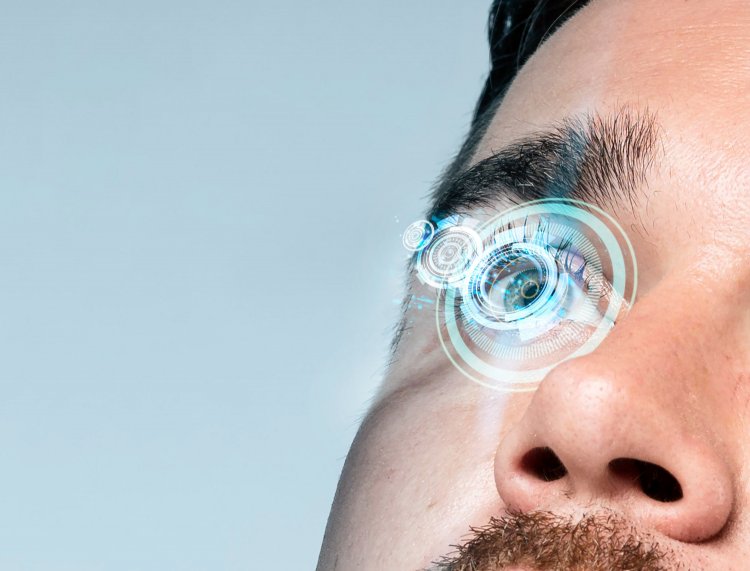LASIK Eye Surgery: Transforming Vision and Lives
LASIK (Laser-Assisted in Situ Keratomileusis) is a popular refractive eye surgery used to correct vision problems such as myopia (nearsightedness), hyperopia (farsightedness), and astigmatism. This procedure involves reshaping the cornea, the clear front part of the eye, so that light entering the eye is properly focused onto the retina, resulting in clearer vision. LASIK is known for its quick recovery time, high success rates, and the potential to eliminate or reduce the need for glasses or contact lenses.

How LASIK Eye Surgery Works
Preparation
Before the surgery, anesthetic eye drops are used to numb the eyes. A lid speculum is placed to keep the eyelids open during the procedure. The patient is asked to focus on a target light to keep the eye steady.
Creating the Flap
Using a femtosecond laser or a microkeratome (a precise surgical instrument), the surgeon creates a thin, hinged flap in the cornea. This flap is then lifted to expose the underlying corneal tissue.
Reshaping the Cornea
An excimer laser is used to reshape the corneal stroma (the underlying layer of the cornea). The laser removes microscopic amounts of tissue in a precise pattern, depending on the patient's specific refractive error. For myopia, the cornea is flattened; for hyperopia, the cornea is steepened; and for astigmatism, the cornea is smoothed to achieve a more regular shape.
Repositioning the Flap
After the cornea is reshaped, the surgeon carefully repositions the corneal flap. The flap adheres naturally without the need for stitches due to the cornea's natural adhesive properties.
LASIK Eye Surgery in Children
LASIK is generally not recommended for children and adolescents because their eyes are still growing and developing. Vision can continue to change until the late teens, making it impractical to perform LASIK before the eyes have stabilized. In very rare cases where LASIK might be considered for children, a comprehensive evaluation by an ophthalmologist is essential to determine the appropriateness of the surgery.
LASIK Eye Surgery in Women
The LASIK procedure is the same for both women and men. However, women who are pregnant or breastfeeding are usually advised to postpone the surgery. Hormonal changes during these periods can affect the stability of vision, and it’s best to wait until after pregnancy and breastfeeding for vision to stabilize before undergoing LASIK.
LASIK Eye Surgery in Men
The procedure and considerations for LASIK surgery are identical for men and women. Men undergoing LASIK can expect the same process, recovery time, and outcomes as women. The surgery is tailored to each individual's specific vision needs and eye characteristics.
LASIK Eye Surgery in the Elderly
Older adults considering LASIK must undergo a comprehensive eye examination to ensure they are good candidates. Age-related conditions such as cataracts or glaucoma can affect eligibility for LASIK. If an elderly patient’s eyes are healthy and their vision has stabilized, LASIK can be an effective solution for vision correction. However, it's essential to address any other eye conditions before proceeding with LASIK.
Procedure of LASIK Eye Surgery
Consultation
A detailed eye exam is conducted to assess the patient’s eye health, corneal thickness, pupil size, and refractive errors. The surgeon will also review the patient's medical history and discuss the potential benefits and risks of LASIK.
Pre-Surgery Preparation
Patients are given specific instructions on how to prepare for the surgery. This may include stopping the use of contact lenses for a period before the surgery and avoiding makeup, lotions, and perfumes on the day of the procedure.
Surgery
The LASIK procedure itself is quick, typically taking about 10-15 minutes per eye. The patient remains awake but comfortable during the surgery.
Post-Surgery Care
After the surgery, patients are given eye shields to protect their eyes from accidental rubbing and injury. They are also prescribed antibiotic and anti-inflammatory eye drops to prevent infection and reduce inflammation.
Risks of LASIK Eye Surgery
While LASIK is generally safe and effective, it does carry some risks and potential complications, including:
- Dry Eyes: LASIK can temporarily decrease tear production, leading to dry eyes. This condition typically improves over time, but in some cases, it can be persistent.
- Glare, Halos, and Double Vision: Some patients may experience glare, halos around lights, or double vision, especially at night. These symptoms usually diminish over time.
- Undercorrections or Overcorrections: In some cases, the laser may remove too little or too much tissue, resulting in undercorrection or overcorrection. Additional surgery or the continued use of glasses or contact lenses might be necessary.
- Flap Complications: The corneal flap can develop complications, such as infection, inflammation, or dislocation.
- Regression: In some cases, vision may gradually deteriorate after LASIK, requiring further treatment.
Post-LASIK Care
After LASIK surgery, patients should follow these care guidelines to ensure proper healing and optimal results:
- Use Prescribed Eye Drops: These help to prevent infection and reduce inflammation.
- Avoid Rubbing the Eyes: Rubbing the eyes can dislodge the corneal flap.
- Wear Protective Eyewear: Use protective eyewear, especially during sleep, to avoid accidental injury.
- Avoid Strenuous Activities: Avoid strenuous activities and swimming for a few weeks to prevent trauma to the eyes.
- Attend Follow-Up Appointments: Regular follow-up visits are essential to monitor the healing process and address any concerns promptly.
Recovery Time for LASIK Eye Surgery
Most patients notice improved vision within 24 hours after LASIK surgery. However, the complete healing process and stabilization of vision can take several weeks to a few months. During this period, patients may experience fluctuations in vision. Patients can typically resume normal activities within a few days but should adhere to their surgeon’s specific recommendations to ensure a smooth recovery.
In conclusion, LASIK eye surgery is an effective and popular method for correcting common vision problems. With proper evaluation and care, it offers a quick recovery time and significant improvement in vision quality. As with any surgical procedure, understanding the risks and following post-operative care guidelines are essential for optimal outcomes. If you are considering LASIK, consult with a qualified ophthalmologist to determine if you are a suitable candidate and to discuss your specific vision correction needs.
Disclaimer
The information provided in this article is for educational purposes only and should not be considered medical advice. If you have any health concerns or are experiencing symptoms, it is important to consult with a healthcare professional, such as a doctor or clinic, for proper diagnosis and treatment. Always seek the advice of your doctor or other qualified health provider with any questions you may have regarding a medical condition. Do not disregard professional medical advice or delay in seeking it because of something you have read in this article.
Hashtags
#LASIK #EyeSurgery #VisionCorrection #EyeHealth #LaserSurgery
What's Your Reaction?





















